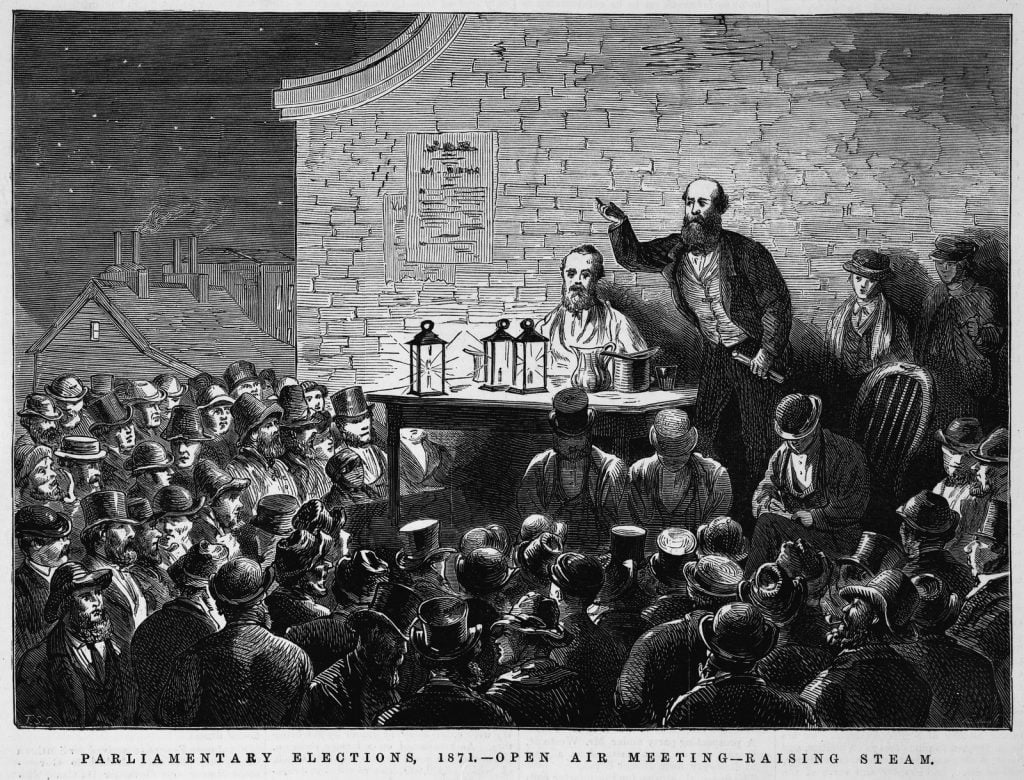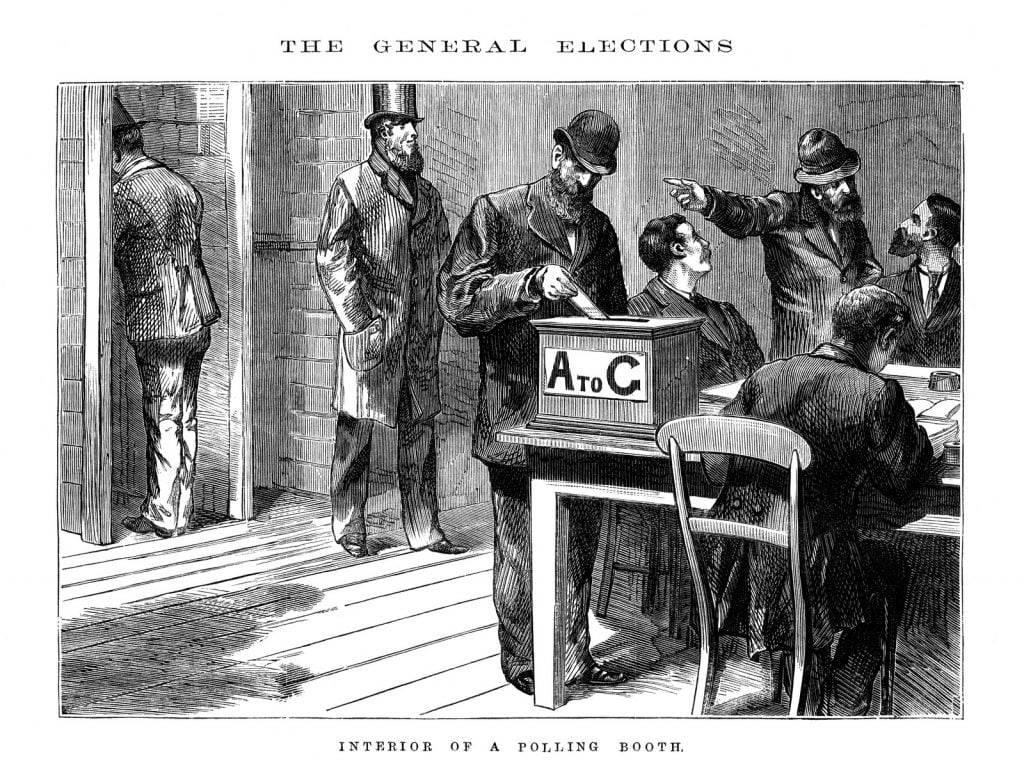Australian electoral rolls contain minimal information, yet they are one of the most valuable and frequently used resources by family historians, who use them extensively to trace the whereabouts of people over time.
Electoral rolls list the names of people who registered to vote in state, territory, federal, local government and municipal elections. While the function of the electoral roll is straightforward, it can be useful to understand a few things about the rolls and the voting systems in order to get the most out of the resource and to help navigate research ‘brick walls’ that may arise.
Electoral rolls do not represent the whole population, they include only those who are eligible and registered to vote prior to a government election. The rolls were updated before each election and electoral boundaries changed over time. Australian voting practices and processes differ for each Australian state and territory and were implemented at different times.
To understand more about Victorian electoral rolls, let’s take a look back at the Victorian electoral system (pre federation).

Pre-Federation Australia
European settlement of the Port Phillip District of New South Wales began in 1835. After separation of the Port Phillip District from New South Wales, the Colony of Victoria was established in July 1851.
Between 1851 and 1856 the Legislative Council governed Victoria. A small number of wealthy property holders elected 20 of the 30 Legislative Council members and Lieutenant-Governor Charles La Trobe chose the rest. 1
Miners on the Victorian goldfields had to purchase regular expensive licences in order to prospect for gold. After the Eureka Uprising in December 1854, a Royal Commission examined conditions on the goldfields and several changes were made. The most significant change in terms of democracy was the abolition of the miners’ licence fee and the introduction of a Miner’s Right (renewable annually for 1 pound) which was recognised as a qualification for voting. 2
In 1854 the Legislative Council set up Victoria’s Constitution providing the framework for government and the establishment of the Legislative Assembly.
Voting restrictions still applied. Miners needed to have been in possession of a licence for a period of twelve months or more and to have occupied or mined in a particular area for a least six months prior to electoral registration. Electors of the Legislative Assembly needed to have freehold property valued at 50 pounds or a leasehold of 10 pounds. Excluded from the franchise were young men living in their parents’ homes, all lodgers and live-in employees. 3
When the Victorian Constitution was enacted in 1856 it brought with it the ground-breaking idea of the secret ballot. Prior to the introduction of the secret ballot, the system was open to many forms of coercion and corruption on the part of both candidates and electors. 4
Those who owned land in several electorates could vote in each one of them. Plural voting was not abolished until 1899 for the lower house and continued until 1938 in the upper house. 5
In 1857 the Parliament altered the Constitution to allow all men over 21 years of age to vote in Legislative Assembly elections. 6
Periodic Victorian state elections occurred between 1856 and 1900.

Records
- Entries in the ‘Electoral lists 1841-1851‘ were compiled from the Port Phillip Herald for 1840-1846 and from the Argus for 1848-1851. The lists vary considerably in coverage and are generally for the Melbourne area.
- The ‘New South Wales, Australia, Historical Electoral Rolls, 1842-1864’ collection is available in the Ancestry database. It includes rolls for Melbourne and the Port Phillip District for 1848 and 1849.
- The `Electoral roll 1851 Melbourne & surrounds index‘ was compiled from records within the Colonial Secretary’s Correspondence held by the Public Record Office Victoria.
TheVictoria, Electoral roll, list of voters, 1856-57‘ has been reproduced and published on microfiche. Entries relate to the first election in the Colony of Victoria, in 1856. Men entitled to vote for the Legislative Assembly and Council are listed both alphabetically by electoral division. It is also included in the ‘Australia, Electoral Rolls, 1903-1980‘ database in Ancestry, although it’s not mentioned in the title.TheVictoria, federal referendum 1899: roll of electors who voted: presented to the Parliamentary Library, 3 May 1901 ‘ contains signatures of some of the electors who voted at the referendum.- Some nineteenth century electoral rolls and information about elections may be found in newspapers, however, coverage is not regular or predictable. The dates of elections can be used to target information.

Local municipal rolls
The municipal rolls are referred to as Burgess or Citizen rolls or Lists, Rate rolls or Voter rolls. Generally, they are referred to as Burgess rolls pre-1939 and Voter rolls post-1939. 7
Rate paying males over 21 years of age who occupied property of a certain value within a local government area were included on municipal rolls.
In 1863 the government decided that municipal rolls would be used as a basis for compiling the electoral rolls for the Colony of Victoria. The act which validated this procedure used the phrase ‘all persons’ when referring to those on the municipal rolls. What the legislators overlooked, in this instance, was the fact that many women owned property and were registered to vote in municipal elections. Some of those women voted in the 1864 Legislative Assembly elections. 8
Records
- The Public Record Office Victoria (PROV) holds municipal citizen rolls and lists. Searches for records can be performed through their ‘Victorian municipal elections voter rolls’ website and records can be ordered for viewing at PROV.
- Search the State Library Victoria’s online catalogue using the term voters rolls to retrieve references to published rolls. A list of municipal rolls available at the State Library can be found on the Researching your Victorian ancestors research guide.
- The microfilm series`Victorian electoral records‘ includes rolls for Melbourne. Select Melbourne suburbs and Victorian regional towns for various years.
Electoral rolls of this nature may also be found in other locations, including local municipal councils, local public libraries and heritage or historical societies.
While not a regular or systematic occurrence, municipal rolls for Melbourne and some regional areas were published in newspapers. See the Victorian Genealogy Electoral and Voter Rolls website for further information.

For information on the Commonwealth electoral system, voting rights for women, First Nation peoples and naturalised citizens, please see Part 2 of our There’s more to the Roll! series.
References
- Parliament of Victoria. Legislative Assembly. ‘Victoria’s Parliamentary History’. Fact Sheet 11.
- Jennings, Sonia. ’Landing A Vote: The past importance of land ownership as an electoral qualification in Victoria’, Provenance: The Journal of Public Record Office Victoria. Issue no. 6, 2007.
- Jennings. See above.
- Jennings. See above.
- Jennings. See above.
- Parliament of Victoria. See above.
- Public Record Office Victoria. Victorian municipal elections voter rolls.
- Jennings. See above.


Excellent, especially the section on the miners licence, the miners right, the right to vote and the ownership of land and right to vote. Very well and accurately summarised, thank you.